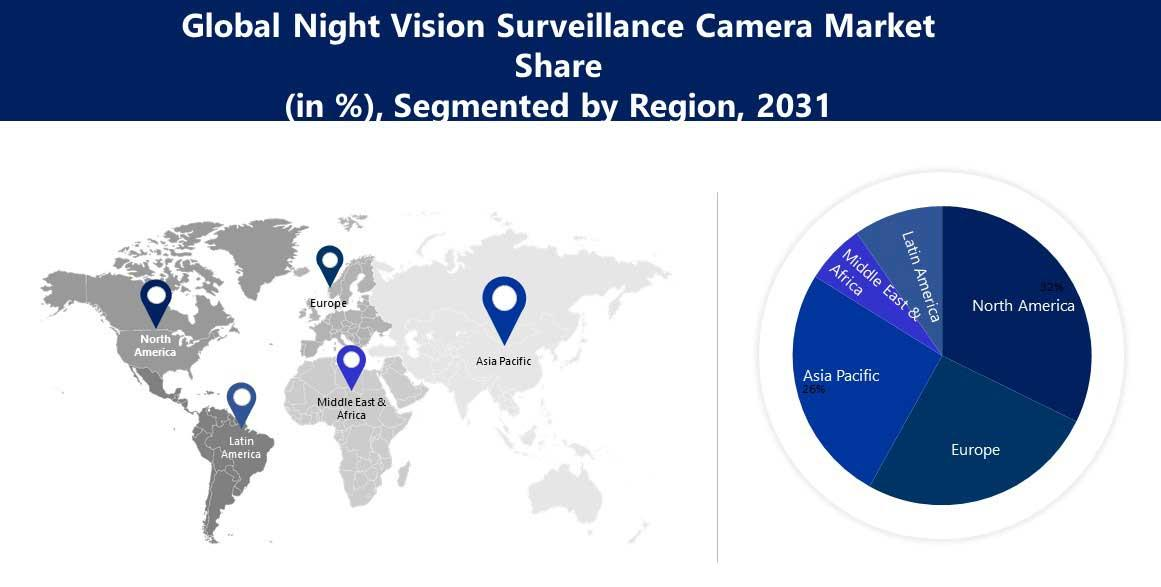The night vision surveillance camera market size exceeded USD 100.18 billion in 2023 and is expected to exceed USD 1.15 trillion by 2036, growing at a CAGR of over 20.7% during the forecast period (i.e., 2024-2036). The night vision surveillance camera industry size is expected to be USD 117.36 billion in 2024. The market is expected to grow due to the growing demand for night vision surveillance cameras in the military and defense industry for security reasons and to monitor border areas. In addition, the military and defense sectors are adopting night vision surveillance cameras and investing more to meet the growing demand for night patrols and combat operations. According to the World Bank, global military expenditure as a percentage of gross domestic product (GDP) was about 2.4% in 2020, up from 2.2% in 2019.
The global night vision surveillance camera market is also expected to grow due to the rise of smart homes. According to estimates, the number of smart homes globally is expected to reach 345 million by 2023, up from 220 million in 2020. Moreover, this figure is expected to cross $460 million by the end of 2025. Infrared (NIR) imaging technology in night vision surveillance cameras is expected to drive the market growth as it enables night vision systems to track and detect motion even in dim light or darkness. Therefore, this factor is expected to drive the growth of the market in the coming years.

| Base Year | 2023 |
| Forecast Year | 2024~2036 |
| Compound Growth Rate | ~20.7% |
| Base year market size(2023) | ~$100.18 billion |
| Forecasted annual market size(2036) | ~$1.15 trillion |
| Regional scope | · North America (United States and Canada)
· Latin America (Brazil, Mexico, Argentina, Rest of Latin America) · Europe (UK, Germany, France, Italy, Spain, Hungary, Belgium, Netherlands and Luxembourg, Nordics (Finland, Sweden, Norway, Denmark), Ireland, Switzerland, Austria, Poland, Turkey, Russia, Rest of Europe), Poland, Turkey, Russia, Rest of Europe) · Asia Pacific (China, India, Japan, South Korea, Singapore, Indonesia, Malaysia, Australia, New Zealand, Rest of Asia Pacific) · Middle East and Africa (Israel, GCC (Saudi Arabia, UAE, Bahrain, Kuwait, Qatar, Oman), North Africa, South Africa, Rest of Middle East and Africa) |
Global Night Vision Surveillance Camera Market Segmentation
The night vision surveillance camera market is segmented by type into PTZ (Pan, Tilt, and Zoom) and Fixed for segmentation and demand and supply analysis. Among these segments, the PTZ segment is expected to gain the largest market share of about 67% during the forecast period. This can be attributed to the increasing popularity of PTZ cameras in a wide range of areas such as airports, supermarkets, museums, construction sites, large outdoor areas, and guard stations. Since PTZ cameras can be zoomed in and controlled remotely, they are used for security purposes in various industries. According to statistics, in the United States, there were about 5,000 public-use airports and about 14,500 private-use airports in 2019, while by 2020, the number of public and private-use airports will grow to about 5,200 and 14,700 respectively. Therefore, this factor is expected to drive the growth of this segment in the coming years.
The global night vision surveillance camera market is segmented and analyzed by demand and supply by end-use applications such as retail, commercial organizations, transportation, public sector and defense, industry, and stadiums. Among them, the public sector and defense sector is expected to have the highest market share during the forecast period. This can be attributed to the continuous occurrence of avoiding terrorist attacks. The public sector and defense segment is expected to hold the largest market share during the forecast year. Moreover, the increasing terrorist attacks involving road accidents, criminal activities, sleeper groups, natural disasters, unethical activities, and other factors are driving the growth of this segment. In the defense industry, various vehicles such as tankers, trucks, and armored personnel carriers are required on board, and it is difficult for the driver to see anything at night. In this case, these vehicles are equipped with enhanced vision systems with short-wave infrared illumination and sensors with unlimited short-wave infrared night vision camera systems so that the driver can easily locate everything in the danger zone. Similarly, it is also used in the public sector to locate any criminal activities, etc.

